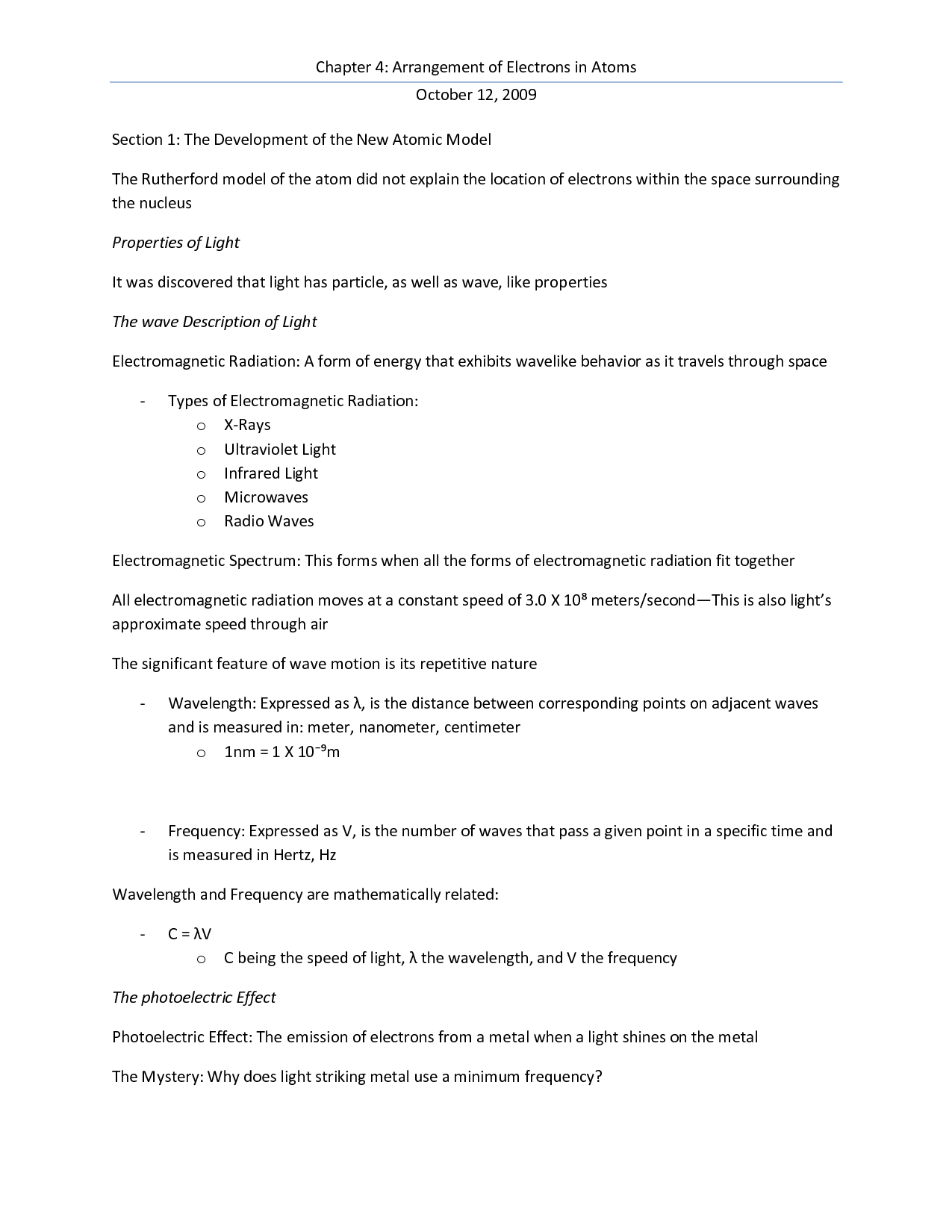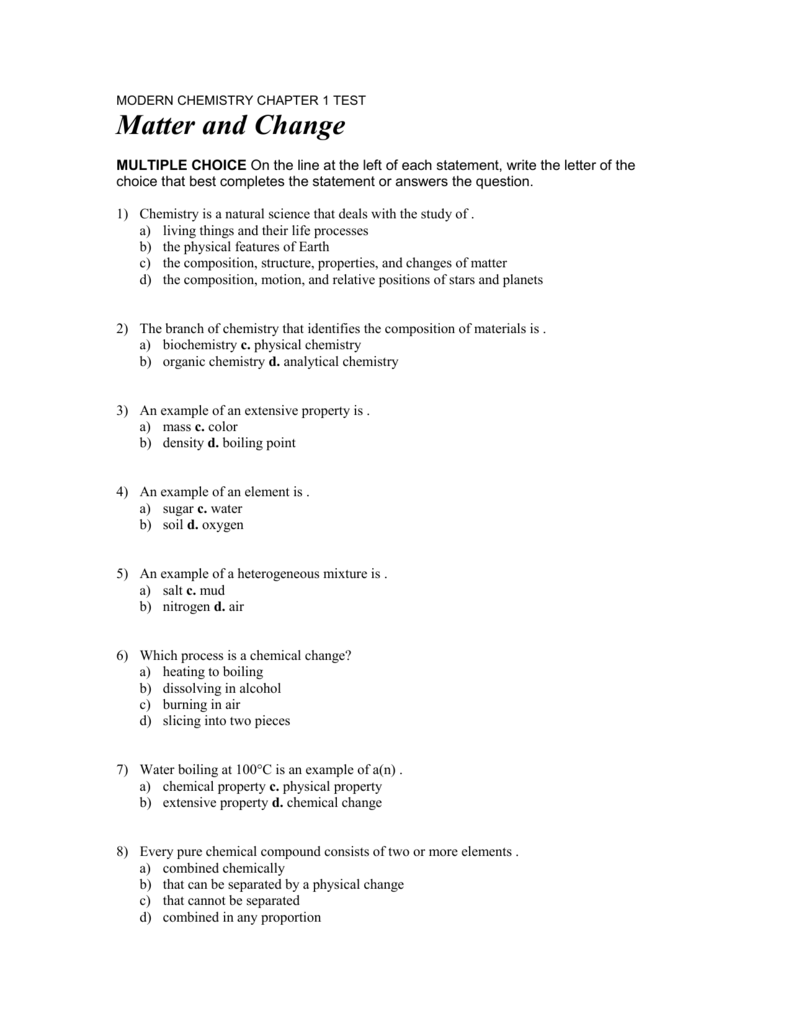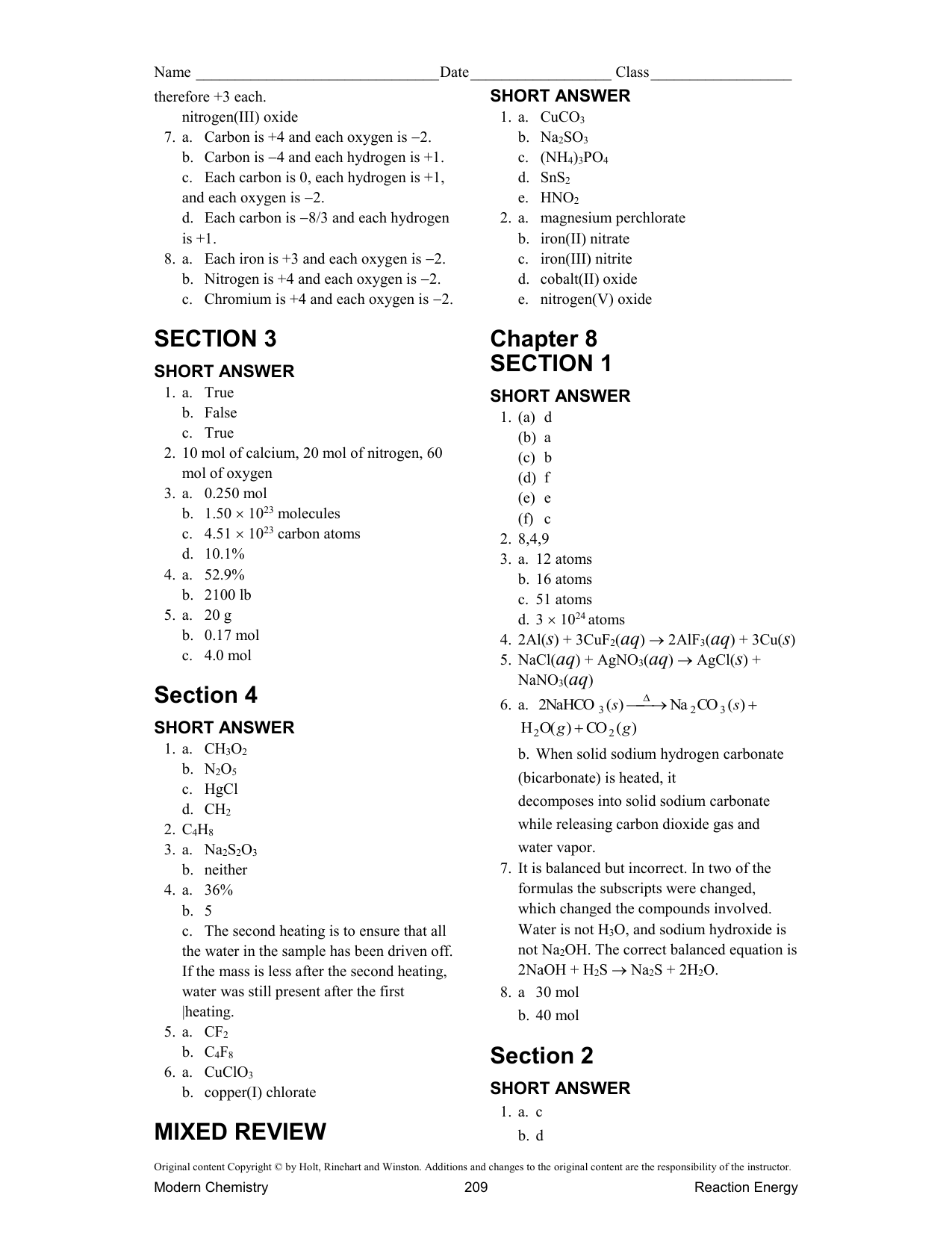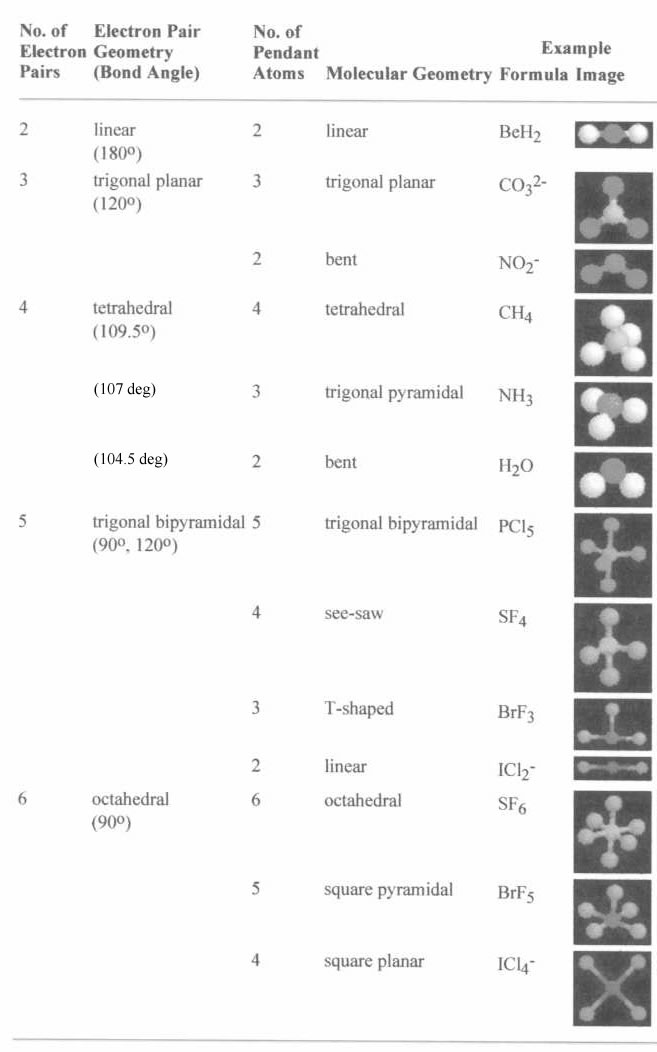Chemistry Chapter 3 Review Answers
Chemistry Chapter 3 Review Answers - Electrons (surrounds nucleus, made up of negatively charged particles) 4 properties of electrons made by thomson & millikan 1. Because 32 g o 2 are actually present, o 2 is in excess and so 2 is the limiting reactant. Objectives, which precede the review. Note that if the calculated amount of o 2 was greater than 32 g, then we would have deduced that o 2 is limiting. Density is 1.0g/cm3 identify each physical property as extensive or intensive. Web the two masses have the same numerical value, but the units are different: Present in all atoms and elements 2. Step 2 of 3 (or) step 3 of 3 Simply, it can be represented as amu. Web 1 / 9 law of conservation of mass, law of definite proportions, and law of multiple proportions click the card to flip 👆 flashcards learn test match created by dellageorge1331 terms in this set (9) what are the three branches of dalton's theory?
Note that if the calculated amount of o 2 was greater than 32 g, then we would have deduced that o 2 is limiting. The study of change 1. Questions at the end of the chapter. 16.5 batteries and fuel cells; Web chemistry chapter 3 review questions flashcards | quizlet. Law of conservation of mass, law of definite proportions, and law. Web 3) atoms of different elements differ in their physical and chemical properties. Rutherford’s experiment involved shooting a beam of particles at a thin sheet of metal foil. He information for the chapter 3. Web together by chemical bonds.
Web 1 / 9 law of conservation of mass, law of definite proportions, and law of multiple proportions click the card to flip 👆 flashcards learn test match created by dellageorge1331 terms in this set (9) what are the three branches of dalton's theory? Web the two masses have the same numerical value, but the units are different: The value of amu is given by as follows: This might also be a good time to read the chapter. Nucleus (center of atom, made up of protons and neutrons) 2. Chapter 3 review 5.0 (1 review) term 1 / 25 law of conservation of mass click the card to flip 👆 definition 1 / 25 mass is neither created nor destroyed during ordinary chemical reactions or physical. Mass and charge never change 3… Learn vocabulary, terms, and more with flashcards, games, and other study tools. Density is 1.0g/cm3 identify each physical property as extensive or intensive. Colorless, odorless, and tasteless 2.
Chemistry Chapter 3 Lesson 5 YouTube
Nucleus (center of atom, made up of protons and neutrons) 2. Start studying chemistry chapter 3 review questions. Law of conservation of mass, law of definite proportions, and law. Step 2 of 3 (or) step 3 of 3 Questions at the end of the chapter.
StirlingIona
With expert solutions for thousands of practice problems, you. 16.3 electrode and cell potentials; Web these are the answers to the honors chemistry midyear exam review chapter 3 questions. 16.4 potential, free energy, and equilibrium; The value of amu is given by as follows:
7 Best Images of Holt Science Worksheet Answers Photosynthesis and
Nucleus (center of atom, made up of protons and neutrons) 2. Web these are the answers to the honors chemistry midyear exam review chapter 3 questions. The following pages contain the bulk (but not all) of t. Web chemistry chapter 3 review questions flashcards | quizlet. Web study with quizlet and memorize flashcards containing terms like before there were chemists,.
Section 3.2 review key
Web exocytosis neurotransmitter molecules are often stored in synaptic ____________ near the presynaptic membrane. 16.5 batteries and fuel cells; The molecular mass is the mass of 1 molecule while the molar mass is the mass of 6.022 × 10 23 molecules. Because 32 g o 2 are actually present, o 2 is in excess and so 2 is the limiting.
modern chemistry chapter 1 test
Carbon dioxide and water are two examples, but answers will vary. Web chemistry chapter 3 review questions flashcards | quizlet. Web together by chemical bonds. 96 g so 2 ×. Web these are the answers to the honors chemistry midyear exam review chapter 3 questions.
Bestseller Chemistry Chapter 10 Section 3 Review Answers
Note that if the calculated amount of o 2 was greater than 32 g, then we would have deduced that o 2 is limiting. The presentation of information in this chapter assumes that you can already perform. They developed _____ and _____ for working with chemicals., lavoisier helped make chemistry. Rutherford’s experiment involved shooting a beam of particles at a.
Chapter 8 Modern Chemistry Review Answers __HOT__
16.5 batteries and fuel cells; The presentation of information in this chapter assumes that you can already perform. You can test your readiness to proceed by answering the review. Solving the rest of the problem: Density is 1.0g/cm3 identify each physical property as extensive or intensive.
Chapter3 reviewanswers
The value of amu is given by as follows: The presentation of information in this chapter assumes that you can already perform. Step 2 of 3 (or) step 3 of 3 Web 4 chapter 3 stoichiometry. Electrons (surrounds nucleus, made up of negatively charged particles) 4 properties of electrons made by thomson & millikan 1.
Holt Rinehart And Winston History Worksheet Answers Nidecmege
Solving the rest of the problem: Web together by chemical bonds. Start studying chemistry chapter 3 review questions. Objectives, which precede the review. Web 1 / 9 law of conservation of mass, law of definite proportions, and law of multiple proportions click the card to flip 👆 flashcards learn test match created by dellageorge1331 terms in this set (9) what.
Mastering chemistry homework answers chapter 3
The study of change 1. The following pages contain the bulk (but not all) of t. Note that if the calculated amount of o 2 was greater than 32 g, then we would have deduced that o 2 is limiting. Web 3) atoms of different elements differ in their physical and chemical properties. Web 1 / 9 law of conservation.
Chapter 3 Review 5.0 (1 Review) Term 1 / 25 Law Of Conservation Of Mass Click The Card To Flip 👆 Definition 1 / 25 Mass Is Neither Created Nor Destroyed During Ordinary Chemical Reactions Or Physical.
He information for the chapter 3. Nucleus (center of atom, made up of protons and neutrons) 2. A) heterogeneous mixture b) solution (solid, of copper & zinc) c) solution. You can test your readiness to proceed by answering the review.
Mass And Charge Never Change 3…
Web 1 / 9 law of conservation of mass, law of definite proportions, and law of multiple proportions click the card to flip 👆 flashcards learn test match created by dellageorge1331 terms in this set (9) what are the three branches of dalton's theory? Objectives, which precede the review. Questions at the end of the chapter. 16.5 batteries and fuel cells;
Learn Vocabulary, Terms, And More With Flashcards, Games, And Other Study Tools.
5) in chemical reactions, atoms are. 16.3 electrode and cell potentials; Focus on this content, but make sure to review class notes,. It is the standard for measuring the atomic mass of the other elements.
96 G So 2 ×.
Note that if the calculated amount of o 2 was greater than 32 g, then we would have deduced that o 2 is limiting. Web together by chemical bonds. Rutherford’s experiment involved shooting a beam of particles at a thin sheet of metal foil. Web 16.1 review of redox chemistry;









